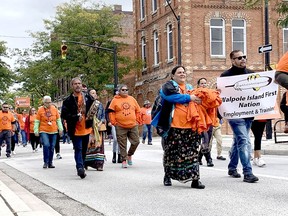picture: Nearly 60{66dc31293c2260cb9172669df609ae161dc6e72a8b49d2ae72b9a1fbbc7d2bf4} of secondary college college students in public faculties determine pretend information
view extra
Credit score: UC3M
Greater than half of Spain’s Obligatory Secondary Schooling (ESO, in its Spanish acronym) college students can distinguish between pretend and actual information. This is without doubt one of the conclusions of a examine carried out by researchers from the Universidad Carlos III de Madrid (UC3M) which analyses Spanish public college college students’ method to the media.
The analysis reveals how these college students (between 11 and 16) get their data and the way they take care of misinformation, amongst different components. “A pretend headline about Covid-19 was recognized as pretend information by 58.8{66dc31293c2260cb9172669df609ae161dc6e72a8b49d2ae72b9a1fbbc7d2bf4} of the scholars, whereas 51.8{66dc31293c2260cb9172669df609ae161dc6e72a8b49d2ae72b9a1fbbc7d2bf4} thought-about a headline containing pretend information about immigration to be true”, says one of many authors of the examine, Eva Herrero, who revealed this work within the scientific journal Comunicar along with Leonardo La Rosa, each from the UC3M Communications Division.
Relating to discrimination between journalistic genres, 92.1{66dc31293c2260cb9172669df609ae161dc6e72a8b49d2ae72b9a1fbbc7d2bf4} say that they can distinguish between data and opinion, however researchers discovered that 64.4{66dc31293c2260cb9172669df609ae161dc6e72a8b49d2ae72b9a1fbbc7d2bf4} confuse an opinion piece with an informative textual content. In relation to the popular platforms to get data, the bulk achieve this by social media (55.5{66dc31293c2260cb9172669df609ae161dc6e72a8b49d2ae72b9a1fbbc7d2bf4}), tv (29.1{66dc31293c2260cb9172669df609ae161dc6e72a8b49d2ae72b9a1fbbc7d2bf4}) and their household and mates teams (7.9{66dc31293c2260cb9172669df609ae161dc6e72a8b49d2ae72b9a1fbbc7d2bf4}), forward of digital newspapers (6.5{66dc31293c2260cb9172669df609ae161dc6e72a8b49d2ae72b9a1fbbc7d2bf4}) or radio (1{66dc31293c2260cb9172669df609ae161dc6e72a8b49d2ae72b9a1fbbc7d2bf4}).
Researchers have studied how youngsters take care of the media from a blended method. Firstly, they carried out a quantitative evaluation, surveying greater than 1600 ESO college students from public faculties in Spain. Secondly, they carried out greater than 75 in-depth interviews with academics at this degree of training. In line with the instructing employees at these faculties, amongst college students there’s a media consumption which is characterised by the intensive and uncritical use of sure audiovisual and digital media similar to TikTok, Instagram or YouTube.
Following the interviews with academics, nearly all of secondary college instructing employees famous the chance to introduce content material associated to how the media works into the curriculum. On this sense, they’ve detected that when working with college students within the classroom on subjects associated to the content material they eat on their social media, the scholars’ motivation and a focus is larger.
This analysis, carried out with the help of a BBVA Basis Leonardo Grant for Cultural Researchers and Creators, reveals that media and data literacy continues to be a pending topic within the secondary college curriculum.
Extra data: Herrero-Curiel, E., & La-Rosa, L. (2022). Secondary training college students and media literacy within the age of disinformation. Comunicar, 73. https://doi.org/10.3916/C73-2022-08
Disclaimer: AAAS and EurekAlert! aren’t liable for the accuracy of stories releases posted to EurekAlert! by contributing establishments or for using any data by the EurekAlert system.
